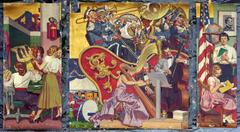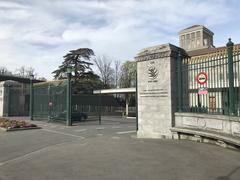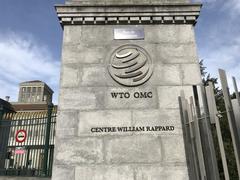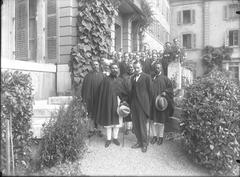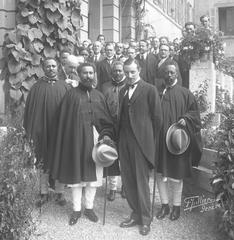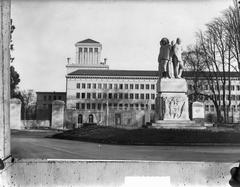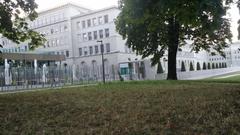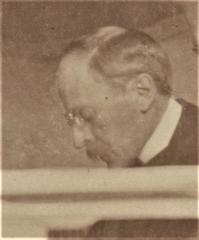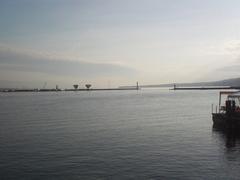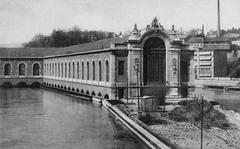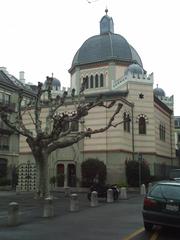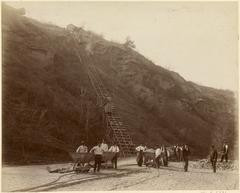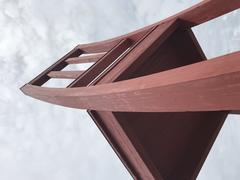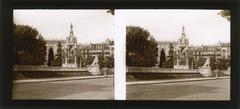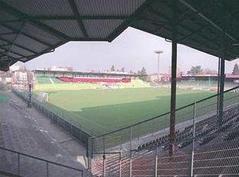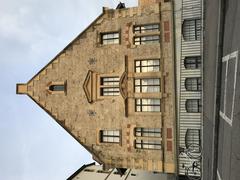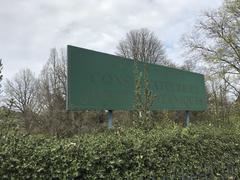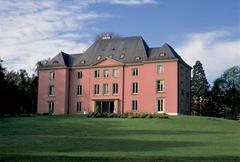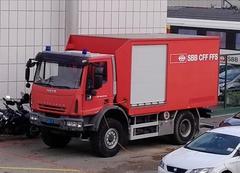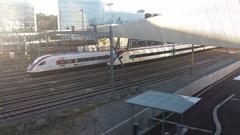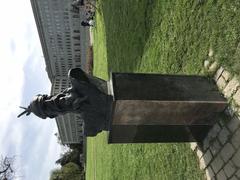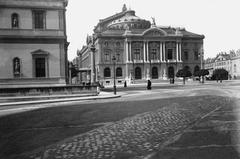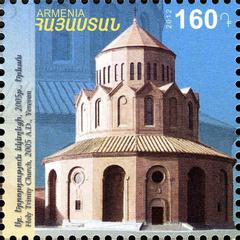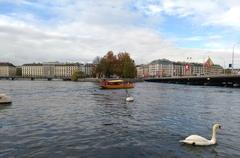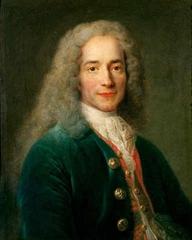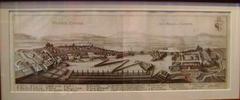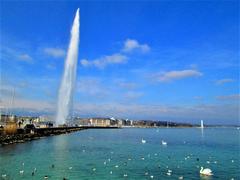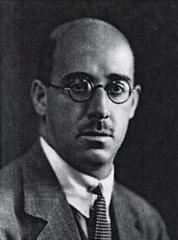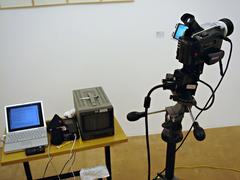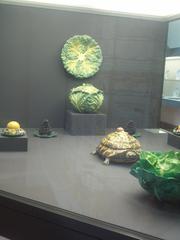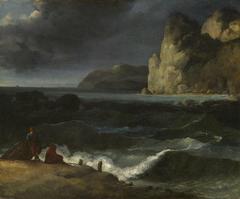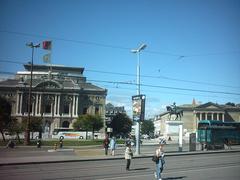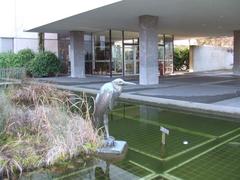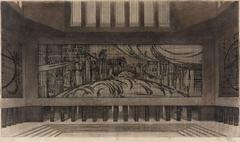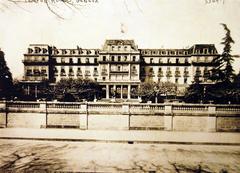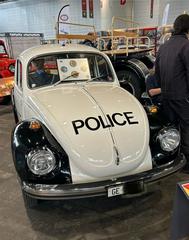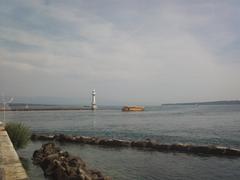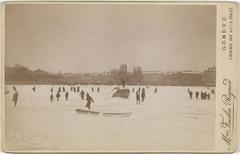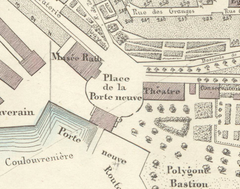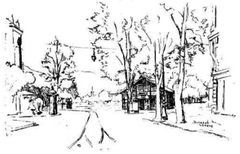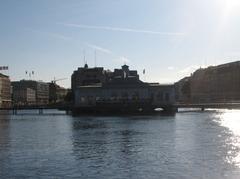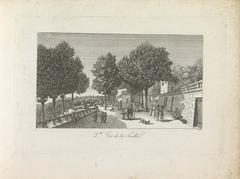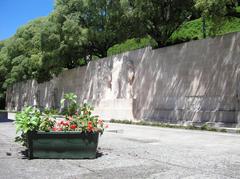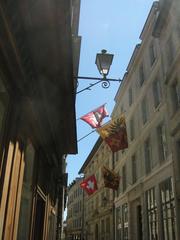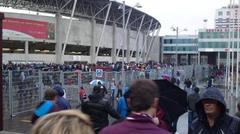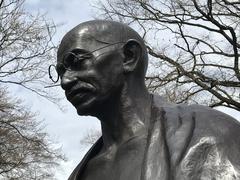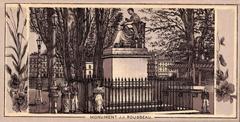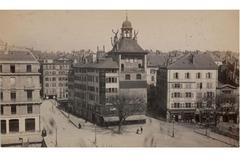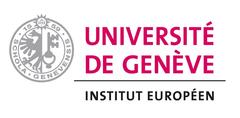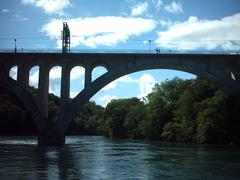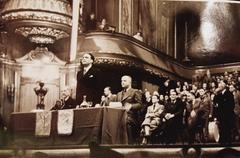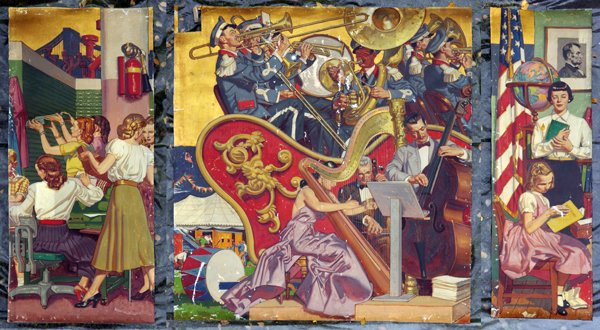
Centre William Rappard Visiting Hours, Tickets, and Geneva Historical Sites Guide
Date: 14/06/2025
Introduction
The Centre William Rappard (CWR) stands on the tranquil banks of Lake Geneva, representing nearly a century of international diplomacy, cooperation, and cultural heritage in Switzerland’s international district. Originally built between 1923 and 1926 as the International Labour Organization’s (ILO) first purpose-designed headquarters, it set the precedent for Geneva as a hub for global governance. Over the years, this landmark has housed the United Nations High Commissioner for Refugees (UNHCR), the General Agreement on Tariffs and Trade (GATT), and, since 1995, the World Trade Organization (WTO).
Swiss architect Georges Épitaux designed the building in a neoclassical style that harmonizes with its surrounding parkland, reflecting Geneva’s dedication to internationalism, stability, and openness. Today, the CWR not only serves as the nerve center for global trade negotiations but also as a living museum, with a rich collection of donated artworks symbolizing peace, labor, and cooperation.
While the building primarily functions as WTO headquarters, it welcomes the public during special open days and by guided tours. Visitors can admire both its architectural grandeur and its impressive art collection, while enjoying views of Lake Geneva and the Alps from the adjacent Parc William Rappard. Accessibility is prioritized, allowing all visitors to engage with this emblem of international diplomacy. This guide provides a comprehensive overview of the CWR’s history, architecture, visitor information, and its role among Geneva’s historical sites. (Wikipedia, WTO iLibrary, Geneva International)
Contents
- Historical Development of the Centre William Rappard
- Architectural Features and Artistic Heritage
- Ownership and Governance
- Visitor Information: Hours, Tickets, Accessibility
- Guided Tours and Visitor Experience
- Highlights and Surroundings
- FAQ
- Plan Your Visit and Further Reading
Historical Development of the Centre William Rappard
Early Beginnings (1923–1975)
The Centre William Rappard occupies land that once included the Villa Rappard (built in 1785) and Villa Bloch, both part of the original estate. In 1921, the Swiss Confederation acquired the property and, two years later, donated it to the League of Nations, reinforcing Geneva’s emerging role in international diplomacy (Wikipedia).
The building was constructed as the ILO’s home, officially opening on June 6, 1926, as Geneva’s first purpose-built international organization headquarters (DBpedia). Rapidly outgrowing its original footprint, the building was expanded multiple times (1937, 1938, 1951, 1957) to meet increasing demands.
Changes in Occupancy (1975–1995)
After the ILO relocated in 1975, the building was renamed for Swiss diplomat William Rappard (1883–1958), a pioneer in international relations. The CWR then hosted the secretariat of GATT, the UNHCR, and the library of the Graduate Institute, continuing its legacy as a hub for global cooperation (Wikipedia).
WTO Headquarters (1995–Present)
The WTO established its headquarters at the CWR in 1995, following the evolution from GATT. A significant expansion in 1998 and a major renovation from 2008–2013 modernized the building, enhancing its capacity while preserving its historical and architectural integrity (Geneve-Int).
Architectural Features and Artistic Heritage
Neoclassical Design and Modern Expansion
Épitaux’s neoclassical vision features symmetry, proportion, and the extensive use of local stone. Subsequent expansions and the 2008–2013 renovation respected this style, adding modern facilities and increasing capacity by up to 13,000 square meters. The new south wing, with its glass façade, seamlessly blends historic and contemporary elements (Wikipedia; FDMP).
Interior Spaces
Inside, the building boasts a luminous atrium (created from a former courtyard), high ceilings, and wide corridors. Modern amenities—including flexible meeting spaces and a 450-seat conference hall—support the WTO’s international activities (WTO iLibrary).
Art and Symbolism
The CWR is home to a significant art collection, much of it donated by member states. Notable items include the never-installed “Geneva Window” by Harry Clarke and the rediscovered “Pygmalion” by Eduardo Chicharro y Agüera. Restored murals and sculptures reflect the building’s mission of peace, labor, and cooperation (WTO iLibrary; academia.edu).
Ownership and Governance
The CWR is owned by the Swiss Confederation and the Canton of Geneva, managed by the Foundation for Buildings for International Organizations (FIPOI), underscoring Switzerland’s commitment to supporting the international community (Wikipedia).
Visitor Information: Hours, Tickets, and Accessibility
Location and Access
- Address: Rue de Lausanne 154, 1202 Geneva, Switzerland
- Transport: Easily accessible by bus and tram; limited parking available.
Visiting Hours
- Building Access: The CWR is a working headquarters and not open for daily public visits.
- Guided Tours: Offered on the first Thursday of each month at 10:00 AM, lasting about 90 minutes. Occasional additional tours during special events.
- Park Access: Parc William Rappard is open to the public 24/7 (Geneve.ch).
Tickets and Booking
- Tickets: Guided tours are free but must be booked in advance through the WTO or Geneva International.
- Requirements: Visitors must present valid photo ID and pass security screening.
Accessibility
The CWR is fully wheelchair accessible, with ramps, elevators, and adapted restrooms. The surrounding park also offers paved pathways (Geneve.com).
Guided Tours and Visitor Experience
What to Expect
Guided tours provide insights into the CWR’s history, architecture, and the WTO’s role in global trade. Visitors can explore the General Council Room, conference halls, the luminous atrium, and the building’s significant artworks. The tours are occasionally tailored to students or groups with specific interests.
Virtual Tours
A virtual experience is available for those unable to visit in person, allowing exploration of the CWR’s main halls and art collections online (Geneve-Int).
Highlights and Surroundings
Architectural and Artistic Features
- Grand Entrance Hall: Marble columns, mosaics, and a sweeping staircase.
- Conference Facilities: Modern rooms with advanced audiovisual systems.
- Artworks: Murals, sculptures, and stained glass by international artists.
- Atrium: A luminous space for gatherings and exhibitions.
Gardens and Outdoor Spaces
The landscaped Parc William Rappard offers sculpture-dotted paths and panoramic views of Lake Geneva, ideal for relaxation or post-tour walks.
Nearby Attractions
FAQ
Q: Can I visit the Centre William Rappard at any time?
A: No, access is limited to guided tours (usually the first Thursday each month) or by appointment during special events.
Q: Are there entrance fees?
A: Guided tours are free but require advance booking.
Q: How do I book a tour?
A: Reserve online via the WTO or Geneva International.
Q: Is the Centre wheelchair accessible?
A: Yes, the building and park are accessible to visitors with reduced mobility.
Q: Can I take photos?
A: Photography is allowed in public areas and gardens; restrictions may apply in meeting rooms—check with your guide.
Q: Are virtual tours available?
A: Yes, via the WTO’s and Geneva International’s websites.
Plan Your Visit
- Book Ahead: Secure your place early due to limited availability.
- Bring ID: Required for entry.
- Dress Appropriately: Smart casual attire is recommended.
- Combine Your Trip: Visit other international sites in Geneva’s diplomatic district.
- Transport: Utilize Geneva’s public transport and the free Geneva Transport Card if staying locally (Geneve.com).
Further Reading and Resources
Summary
The Centre William Rappard is a living monument to international cooperation, negotiation, and cultural exchange. Its neoclassical architecture, significant art collection, and pivotal role in global trade make it a must-see for those interested in Geneva’s historical sites. While public access is limited, guided tours, virtual visits, and the surrounding park provide ample opportunities to engage with this historic landmark. Plan ahead, book your tour, and experience Geneva’s legacy of diplomacy and peace.
Download the Audiala app for up-to-date information, exclusive content, and enhanced guided tours. Follow us on social media for the latest news and visitor tips.
